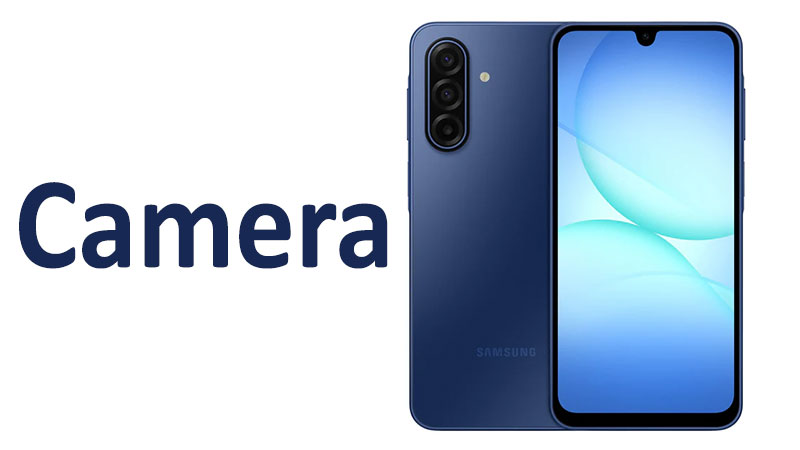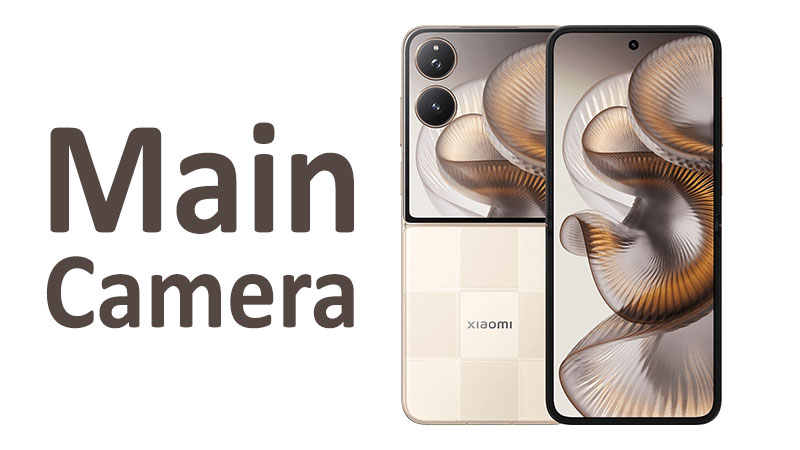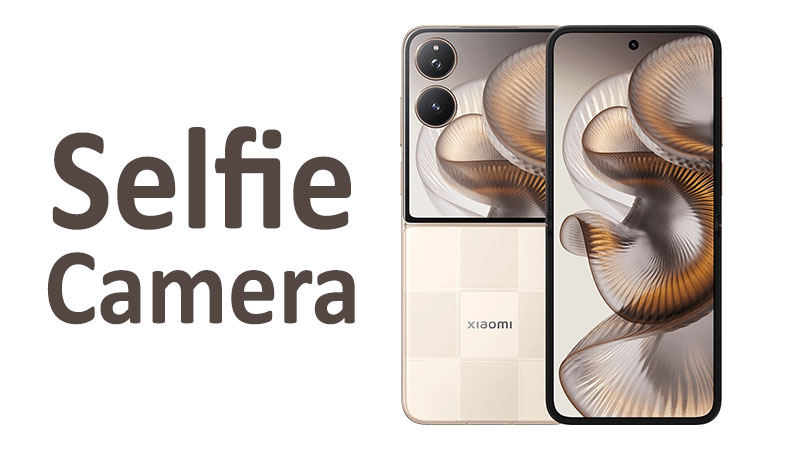The Samsung Galaxy A17 Camera system is a key focus for millions of budget-conscious buyers globally. A capable smartphone camera is now essential for daily communication and digital memory creation. Samsung designed the Galaxy A17 to provide a balanced, highly reliable photographic experience. It achieves this while maintaining a competitive and affordable price point. This detailed review will thoroughly examine the advanced specifications of its triple rear camera array. We will closely analyze the powerful 50 megapixel main sensor. We also investigate the importance of Optical Image Stabilization, or OIS, in this price segment. Understanding these specific components is vital for every consumer considering this device. This comprehensive guide evaluates the core hardware, advanced software performance, and overall user experience. We aim to determine if the Samsung Galaxy A17 delivers truly exceptional value in budget mobile photography.
Rear Camera System Architecture
The Samsung Galaxy A17 features a highly versatile triple rear camera configuration. This arrangement provides essential flexibility for general photography. The camera module includes three distinct lenses with specialized functions. It starts with a high-resolution 50 megapixel wide lens. It also includes a 5 megapixel ultrawide lens for expansive scenes. Finally, a 2 megapixel macro lens handles extreme close-up detail. This complete system allows users to capture a wide variety of subjects. This architecture balances high resolution with practical versatility.
The Flagship Component: 50 MP Wide Sensor
The primary camera on the Samsung Galaxy A17 is a high-resolution 50 megapixel wide sensor. This lens forms the foundation of the entire photographic experience immediately. Its high pixel count is central to the phone’s marketing and appeal. This lens captures the majority of the device’s high-quality photographs. It is the powerhouse that handles all general-purpose shooting. This powerful main sensor promises excellent photographic detail in optimal light.
Aperture and Light Capture
The main lens features an f/1.8 aperture. This is a crucial metric for measuring light intake. This wide opening allows a substantial amount of light to strike the sensor quickly. The large aperture is key for capturing bright, clear images in lower light environments. It also helps produce a shallow depth of field effect naturally. This results in pleasing subject separation from the background. The f/1.8 aperture significantly boosts the camera’s low light potential.
Sensor Specifications and Detail
The primary sensor features a small physical size of 1/2.76 inches. This is common for budget and mid-range 50MP sensors. The individual pixel size is 0.64µm. To compensate for the smaller sensor, Samsung uses advanced processing. The camera relies on pixel binning for superior light capture. This combination balances high resolution with the physical constraints of the price point.
Autofocus and Stabilization: AF and OIS
The main lens includes essential Autofocus, or AF, for sharp shots. This focusing technology ensures rapid subject locking when taking pictures. Crucially, the main camera includes Optical Image Stabilization, or OIS. OIS is a truly premium feature rarely found in this specific budget class. This hardware counters subtle hand movements effectively and physically. It results in sharper photos and much steadier video recordings automatically. OIS is a major, measurable advantage for the Samsung Galaxy A17 camera system.
Advanced Image Processing and Pixel Technology
The camera system uses sophisticated software to maximize the output of its 50MP sensor. Samsung’s signature color science is applied to all photographs. This processing is essential for achieving the final high-quality image.
Pixel Binning Strategy
The 50 megapixel sensor always uses four-in-one pixel binning for most standard shots. This process combines four adjacent pixels into a single, larger “super pixel.” This results in a final image resolution of 12.5 megapixels. This technique significantly improves light sensitivity and greatly reduces digital noise. The 50MP sensor effectively serves to provide superior 12.5MP images in automatic modes. Users can usually switch to the full 50MP mode for maximum detail in bright sunlight.
Samsung’s Color Science and HDR
Samsung applies its well-known vibrant and saturated color science. This color tuning makes images pop immediately, especially on the phone’s display. It is highly appealing for social media sharing and viewing. The camera features built-in HDR functionality. High Dynamic Range (HDR) processing captures details in both the brightest and darkest areas. This results in consistently well-balanced images, even in challenging high-contrast scenes. The software optimization complements the hardware effectively.
The Secondary and Tertiary Lenses
The Samsung Galaxy A17 camera system provides wide-angle and close-up functionality. These secondary lenses add necessary versatility to the overall photographic array. However, their lower specifications reflect the phone’s budget focus.
The 5 MP Ultrawide Lens
The secondary lens is a 5 megapixel ultrawide camera. This lens adds essential versatility for capturing expansive scenes. It is perfect for stunning landscapes, architectural shots, and large group photos. The lens features an f/2.2 aperture. It has a small sensor size of 1/5.0 inches. The individual pixel size is 1.12µm. The 5MP resolution is notably low for an ultrawide camera today. This is the primary trade-off for including OIS on the main lens.
Ultrawide Performance and Limitations
The ultrawide lens performs best in bright, natural daylight conditions. It successfully captures a broad field of view, adding valuable context to the scene. Detail resolution drops noticeably compared to the 50MP main lens. Images may appear softer, particularly towards the edges of the frame. Performance degrades quickly in low light due to the low 5MP resolution. Users should primarily use this lens outdoors in well-lit environments. Its utility lies in perspective, not raw detail.
The 2 MP Macro Lens
The third lens is a basic 2 megapixel macro camera. This lens allows users to capture extreme close-up details of small objects. It features an f/2.4 aperture. This is a purely functional lens for niche photography. It helps users explore the tiny details of flowers, insects, or fabric textures.
Macro Usability and Detail
The 2MP resolution is inherently limiting for macro detail. The final image size is very small, which limits print or intense cropping potential. Users must hold the phone very still at the required focusing distance. The main camera’s software-based zoom might yield sharper, more versatile results in some situations. The 2MP macro lens is included primarily for feature completeness. It provides the minimum necessary close-up capability.
Video Recording and Stabilization Capabilities
The Samsung Galaxy A17 offers functional and highly stabilized video recording capabilities. The phone focuses on reliable 1080p recording for standard use. The inclusion of hardware and software stabilization is its most important feature.
Full HD 1080p Standard
The phone supports Full HD 1080p video recording at 30 frames per second. This is the common and reliable standard for most budget smartphones. 1080p resolution is more than sufficient for social media sharing and viewing on a smartphone screen. The quality is clean, sharp, and perfectly acceptable for everyday moments. However, the fixed 30fps standard limits the camera’s ability to capture smooth action. The absence of 4K video is a clear limitation compared to slightly more expensive rivals.
Dual Stabilization: OIS and Gyro-EIS
The Pova Slim utilizes two powerful stabilization methods. First, Optical Image Stabilization, or OIS, operates on the main lens. OIS physically counters camera shake for smoother, cleaner footage. Second, the phone includes gyro-Electronic Image Stabilization, or gyro-EIS. Gyro-EIS provides an additional layer of digital smoothing to the footage. This combination of OIS and gyro-EIS creates remarkably stable video. This professional stability is a major benefit for handheld recording. It is a critical feature for vlogging and recording while walking.
Video Performance in Different Conditions
Video quality is strong in bright lighting due to Samsung’s processing. The dual stabilization keeps footage steady and reduces jarring movements effectively. Low light video is functional but noise increases noticeably due to the small sensor. The fixed 30fps frame rate is a limitation for capturing high-speed action clearly. However, the overall stability makes the recorded 1080p footage look professional.
The Selfie Camera Review: 13 MP Front Sensor
The front-facing camera on the Samsung Galaxy A17 is a strong component in its own right. It features a capable 13 megapixel wide sensor. This resolution is highly respectable for a phone in the A-series budget segment. It is specifically designed to deliver clear and detailed self-portraits consistently. This strong focus on the front camera caters directly to social media users and casual vloggers.
Front Camera Specifications and Detail
The selfie camera uses a solid 13 megapixel sensor. It has an f/2.0 aperture, which is relatively wide for a front lens. The sensor size is 1/3.1 inches. This size is surprisingly large for a front camera. It provides a generous 1.12µm pixel size. This larger pixel size helps capture more light in tricky indoor environments. The combination ensures excellent detail capture in most lighting conditions. It captures detailed textures and clear facial features. This quality is perfect for sharing or cropping images after the shot.
Selfie Performance and Video Quality
Selfie photo quality is generally excellent under optimal lighting conditions. The f/2.0 aperture helps keep the background nicely blurred in portraits. Samsung’s software applies smart portrait enhancements. Video recording on the front camera is limited to 1080p at 30fps. This is highly suitable for video calls and social media stories. The 13MP resolution ensures the image remains clean during video compression. The front camera is a powerful and reliable highlight of the Galaxy A17 camera package.
Specialized Comparisons and Market Positioning
The Samsung Galaxy A17 camera system occupies a crucial position in the entry-level market. A comparison against its predecessor and key rivals highlights its strategic strengths immediately. The phone’s primary distinction is the inclusion of OIS.
Comparison with the Samsung Galaxy A16 (Hypothetical Predecessor)
The Samsung Galaxy A17 represents a major strategic leap in camera quality. The most significant upgrade is the addition of Optical Image Stabilization, or OIS, to the 50MP main lens. The A16, or previous equivalent models, likely lacked this crucial hardware feature. OIS translates directly to sharper photos and steadier videos. Furthermore, the A17 likely features a larger main sensor or a slightly wider aperture. The selfie camera may also see a modest resolution bump to 13MP. The A17 focuses heavily on stabilization and core sensor quality. This makes it a compelling upgrade for existing Samsung A-series users.
Competition Against Budget Rivals
The Samsung Galaxy A17 camera array competes fiercely with rivals from brands like Xiaomi and Tecno. Many budget rivals offer a complex quad-camera setup. These setups typically include a high-resolution ultrawide lens. The Galaxy A17 strategically trades ultrawide resolution (5MP) for main sensor stabilization (OIS). The OIS inclusion is the A17’s biggest competitive advantage. Most rivals in this price category omit OIS entirely. The 50MP primary sensor is standard. However, the added stabilization and Samsung’s superior software processing differentiate the A17. The 5MP ultrawide and 2MP macro lenses are clear weak points compared to some competitors. Buyers must decide if OIS is more valuable than ultrawide sharpness.
The OIS vs. Ultrawide Trade-Off
The Galaxy A17 prioritizes stabilization and core main camera quality. This focus is perfect for users who primarily use the main lens for photos and video. Rivals often include an 8MP ultrawide lens for better expansive shots. The A17’s 5MP ultrawide is visibly weaker in detail. However, OIS ensures professional-grade stability in all main lens shots. This is a critical factor for purchase decision-making. The A17 is the clear choice for users focused on video stability and low-light main camera reliability.
Buyer’s Guide: Pros, Cons, and Key Takeaways
The Samsung Galaxy A17 camera system provides a high-quality photographic experience focused on stability. Potential buyers should carefully weigh its focused strengths against its hardware limitations. This honest evaluation helps consumers make the most informed purchasing decision possible.
Pros
The main camera offers a high-resolution 50 megapixel sensor. This ensures excellent daylight detail consistently. The inclusion of Optical Image Stabilization, or OIS, is a massive advantage for stability. OIS delivers sharper low light photos and much smoother videos. The 13 megapixel front camera provides excellent resolution for clear selfies and vlogging. Dual stabilization (OIS and gyro-EIS) keeps all video footage impressively steady. Samsung’s reliable software processing and color science enhance all final images.
Cons
The ultrawide lens resolution is a very low 5 megapixels. This severely limits its ability to capture fine detail. Video recording is capped at 1080p resolution at 30 frames per second. There is no support for higher 4K video resolution. The 2MP macro lens offers limited practical photographic utility. Low light performance is respectable but constrained by the main sensor’s size.
Important Points a Buyer Should Know
First, the Samsung Galaxy A17 is built around the OIS feature. The OIS is the single most important component of the camera system. Second, the camera excels at stabilized, everyday photos and videos. It is a reliable performer for daily use and sharing. Third, you must accept the compromise on ultrawide image quality. The 5MP ultrawide lens is included for versatility, not high detail. Fourth, the 13MP selfie camera is a strong, reliable component for self-portraits. This camera is highly ideal for the average user who wants high-detail, stable photos, and reliable video. It is a solid performer in the budget market.
Conclusion
The Samsung Galaxy A17 Camera system is a strategically smart and highly valuable photographic device. The triple-lens setup delivers reliable photo detail through its 50 megapixel primary sensor. The game-changing inclusion of Optical Image Stabilization, or OIS, is its defining feature. OIS provides a clear advantage in both stability and low-light sharpness over most budget rivals. The capable 13 megapixel selfie camera is also a strong asset for front-facing clarity. While the camera has limitations, such as the low-resolution ultrawide lens and fixed 1080p video, the system provides superior stability where it truly matters most. It effortlessly meets the high demands of the average user focused on stable, sharp images and reliable daily video capture. The Samsung Galaxy A17 camera firmly establishes itself as a strong budget leader. It offers compelling and focused value in the highly competitive entry-level smartphone market.
Frequently Asked Questions (FAQ)
Does the Samsung Galaxy A17 main camera have Optical Image Stabilization (OIS)?
Yes, the main 50 megapixel wide camera features full Optical Image Stabilization, or OIS.
What is the maximum video recording resolution available on the A17?
The phone’s maximum video recording resolution is 1080p at 30 frames per second.
How detailed are the ultrawide camera photos?
The ultrawide camera uses a 5 megapixel sensor. Its photos are wide but lower in detail than the main lens.
What is the resolution of the front-facing selfie camera?
The front-facing selfie camera uses a 13 megapixel sensor for high-resolution self-portraits.
Is the 2MP macro lens useful for detailed close-ups?
The 2MP macro lens is functional for close-ups. However, its low resolution limits the amount of fine detail captured.



